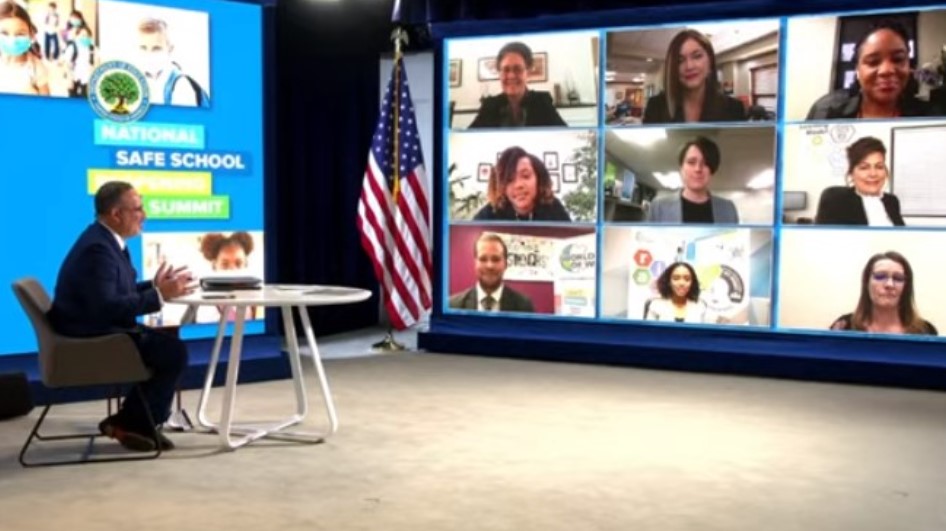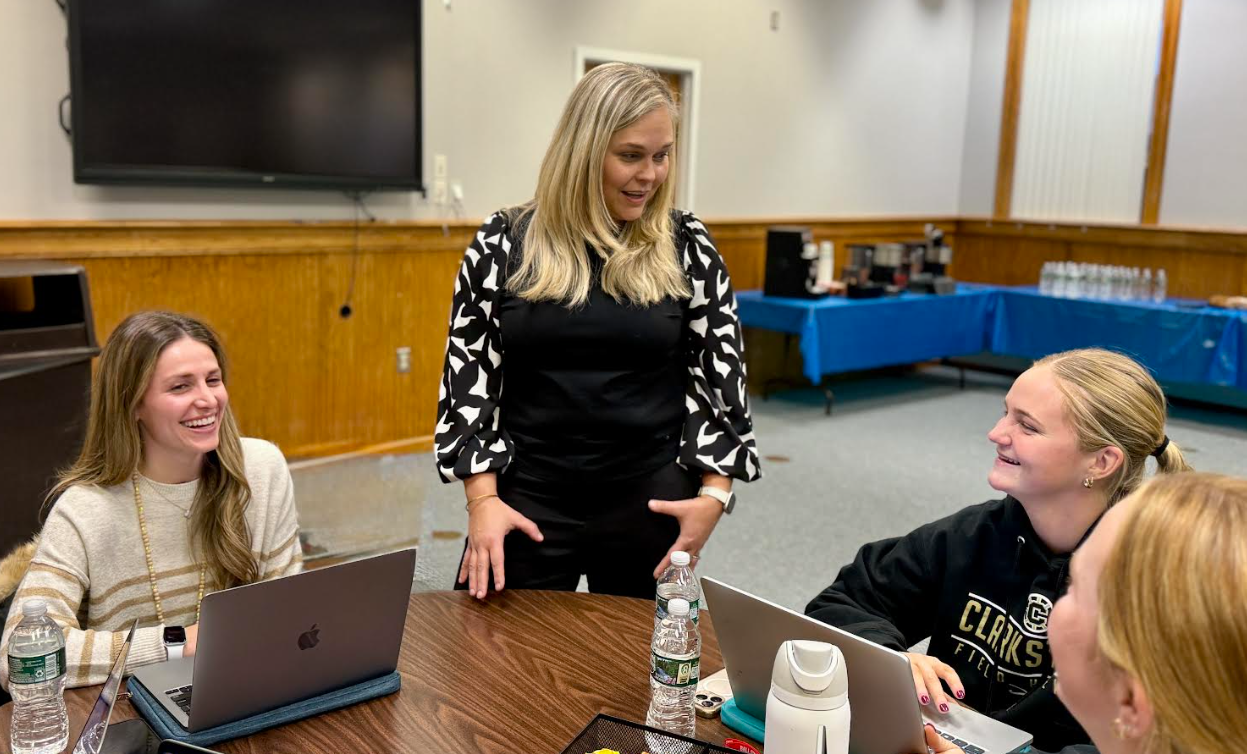Key Takeaways from the National Safe School Reopening Summit
The U.S. Department of Education’s recent National Safe School Reopening Summit included best practices, resources, and more to support the return to in-person learning

“My message is, ‘Help is here. Help is here.’”
That’s what President Biden told attendees during the virtual National Safe School Reopening Summit, an event sponsored by the U.S. Department of Education designed to provide support and critical resources to educators, students, and other stakeholders as they work to reopen schools to in-person learning.
During his remarks, Biden stressed the importance of in-person education and focusing our help on those students who were disproportionately affected by the pandemic. “These aren’t someone else’s children, these are all our children,” Biden said. “They are the kite strings that lift our nation's ambitions aloft, and they need that opportunity.”
Biden also told educators that he’s depending on them. “As my favorite teacher, the First Lady, likes to say, ‘Any nation that out-educates us will out-compete us,’” he said. “Everything our nation is going to be tomorrow is dependent on how we educate our young people today.” He also reminded states and educators that $130 billion from the American Rescue Act is now available to support schools.
First Lady (and classroom teacher) Dr. Jill Biden also addressed attendees during the three-hour event, which also included other guest speakers and multiple panel discussions around key topics related to safely reopening schools to in-person learning. “There are some who have questioned whether or not educators want to go back to school. Of course we do!” Dr. Biden said. “Classrooms are where our work comes alive, they’re where we can truly connect with our students, and where we build community.”
“We still have lots to do,” said Secretary of Education Miguel Cardona. “We learn best from one another. We know that, and that’s why we’re here today.”
Watch the full summit
Tools and ideas to transform education. Sign up below.
Key Takeaways
The Summer Learning and Enrichment Collaborative
As part of the Education Department’s efforts to mitigate learning loss, Biden and Secretary of Education Miguel Cardona announced a new program, the Summer Learning and Enrichment Collaborative. Cardona, who also announced that he’ll be going on a nationwide listening tour, promised that the summer collaborative won’t be a traditional “drill and skill” program, but part of the ongoing effort to improve education and an opportunity “to hit the reset button on the things that aren’t working.” More details will be forthcoming in the next few weeks.
5 Key Mitigation Strategies
“The CDC believes that schools should be the last place to close and the first place to open,” said Dr. Rochelle Walensky, Director of the Centers for Disease Control and Prevention. Reminding attendees that “Science must lead the way,” Walensky discussed how the CDC has reviewed all the data in creating return to school strategies that have been built on evidence.
Walensky also said that the key to a successful and safe reopening relies on five key mitigation strategies that should be layered or implemented together to increase effectiveness.
- Proper masking
- Appropriate social distancing, for which the CDC just revised guidelines, going from 6 feet to 3 feet
- Proper hand washing (at least 20 seconds, and repeated throughout the day)
- Regular cleaning of high-touch areas, such as door handles and light switches
- Screening, testing, and then quickly isolating those who test positive for COVID-19
All schools should have a plan for diagnostic testing, said Dr. Greta Massetti, Co-Lead of the Community Interventions and Critical Populations Task Force for CDC COVID response. If someone shows symptoms, there needs to be a place to isolate them. Funds are now available for school screening and educator vaccination.
“There’s no way to completely eliminate risk,” said Massetti. “What the objective should be is to keep that infection spread low. To prevent that one case from becoming five or 20 cases.”
Although not one of the key mitigation strategies, Massetti also stressed the need for proper ventilation and air exchange. Districts can use a combination of strategies, such as bringing in outdoor air (cracking windows open), ensuring HVAC are set to maximize ventilation, and increasing filtration (changing filters more frequently, using exhaust fans and hepa filters in classrooms).
Most of the prevention strategies are either low-cost or no cost. For example, social distancing by creating one-way hallways or rethinking learning spaces can be effective.
These layered mitigation strategies will work against COVID variants, said Massetti.
Lessons from the Field
In a panel session moderated by Cardona and Walensky, educators, staff, and students from Cleveland Metropolitan School District and New York City Public Schools shared their best practices for reopening.
“As hard as closing was, opening is harder,” said Cleveland Metropolitan School District CEO Eric Gordon. The district, in which 75 percent of staff has been vaccinated for COVID-19, used the CDC guidelines to create a three-point reopening plan that focused on physical safety, virtual social-emotional support and messaging, and collaboration with stakeholders every step of the way. The district also partnered with the local healthcare community to create a reopening playbook and organized teaching teams, and has phased in synchronous in-person instruction four days per week.
“We didn’t get into the pandemic overnight, and we’re not going to get out of it overnight,” said Sheri Obrenski, president of the district’s teacher’s union, who stressed the importance of collaboration and communication among everyone in the district during the process.
“This is new to all of us,” said Aaron Creel, Facilities Director, who also cited the need for flexibility and working together. His team met with each school’s staff to optimize student flow and provide the appropriate signage to maintain distancing. They also prioritized ventilation, replacing 15,000 air filters in newer buildings and adding more than 900 air purifiers to older ones, and created PPE stockpiles across the district.
In New York City, which has been hit hard by the pandemic -- including more than 70 public school staff who have been killed by COVID-19 -- it was key to focus on allaying anxiety and fear for everyone and dealing with it, said Michael Mulgrew, president of the United Federation of Teachers. “So it was transparency and safety at all times, and being clear,” said Mulgrew, who noted that there were multiple virtual town hall meetings with faculty and staff. “Everyone who walks into a school building wants to help children, so we had to take that and use it as our guiding force as we went through.”
The main focus of that effort was on ventilation, said Meisha Porter, NYC DOE chancellor, who, with other leaders, personally inspected every building, checking each individual classroom to make sure it had functioning ventilation. “It was important for people to know that the leadership walked through the buildings to make sure it was safe,” Porter said, adding that more than $31 million was spent to upgrade filters and add air purifiers.
To also help ease fears and model good masking practices, leaders stayed transparent and connected with their communities. For example, at PS 1 in Manhattan, principal Amy Hom help workshops with students and shared pictures of staff wearing masks so students would know what to expect when they returned to class. Staff showed students how to properly wear masks. “We also bribed students, I’m not afraid to say,” laughed Hom. “We have stickers, we have candy, we have decorations -- whatever is needed to keep those masks on.”
Social-Emotional Needs
The final part of the event focused on strategies to support the social, emotional, and academic development needs of students, especially those who have been historically underserved, as they returned to in-person learning. Educators and students from Cajon Valley USD in California and Tulsa Public Schools shared how they’ve been addressing those needs across their entire school community.
At Cajon Valley USD, which is returning to full in-person classes in the next week, the approach started with getting staff and parents on board first. “In order to have happy, engaged students in schools, we need to have a culture of engaged adults on our campuses,” said assistant superintendent Karen Minshew. Since last March, the district has staged more than 100 active listening sessions with all stakeholders to hear concerns and what needs were of the highest priority. “Engaging our customers was the key, and that has provided the steps and guidance to reopen,” she said.
“The reality is that social-emotional learning cannot be embedded, it has to be at the forefront of everything you do,” said Nerel Winter, principal of Bostonia Language Academy. He discussed how they have used multiple communication platforms, such as Facebook Live and TikTok, to provide opportunities for parents to have a voice in the school and community to better know their students’ values, interests, and strengths. “We want them to know we care about them and want to build strong relationships with them,” he said.
In Tulsa, wellness teams were launched to support the whole student and adults. They worked to connect directly with students, families, and staff, through phone calls and other means, to see how everyone was doing.
“You can’t have cognitive work happening without a real focus on the social, emotional needs of students, said Paula Shannon, assistant superintendent. To address that, the district embraced the CASEL framework to introduce three key SEL practices.
- Warm welcomes, from administrators in meetings to teachers beginning classes
- Optimistic closures, when ending meetings/lessons, including time to be reflective
- Look fors, in which leaders observe and provide feedback
“We have lots to learn,” said Shannon. “And I would say to all of you driving toward bold change: Have the courage to be bold. You’re going to feel a lot of tension, lots of technical questions are going to come up that are mired in old bureaucracy. Forge ahead, and give your school leaders, teachers, and community partners the cover they need to do awesome things for our young people.”
Ray Bendici is the Managing Editor of Tech & Learning and Tech & Learning University. He is an award-winning journalist/editor, with more than 20 years of experience, including a specific focus on education.
